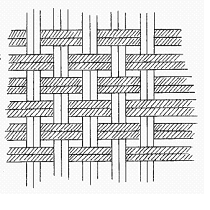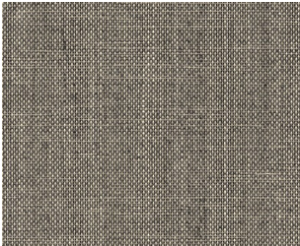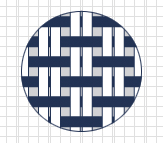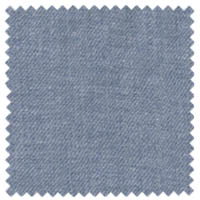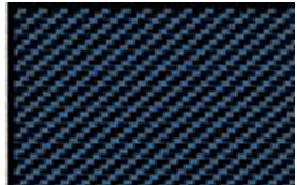Ever walk into a bespoke tailor appointment to hand pick some shirt swatches and get completely overwhelmed? Or click on that website link everyone’s been raving about for weeks, only to find that you are utterly oblivious to the terminology staring you in the face?
Fear not! The Dark Knot is here to help assuage some of those insecurities. We want to breakdown convoluted jargon into layman terms. Because really, it’s not that complicated when it comes to shirt fabrics.
Fabric Type
The vast majority of shirt fabrics fall into five major weave categories; Broadcloth, Oxford, Pinpoint, Twill and Herringbone.
Broadcloth – also known as ‘poplin’, is the quintessential dress shirt fabric. The fabric is manufactured using a simple over / under weave pattern and is generally woven tightly with finer yarns so that the fabric is smooth and silky. Broadcloth fabrics are of much smoother texture and quality than its Pinpoint or Oxford cousins, and hence, are more suitable for formal occasions. Broadcloths are generally lightweight, and more so as the yarn count increases. As such, they can be worn in warmer climates
Oxford – these fabrics are created using rougher, more substantial yarns, and hence are inherently more casual. Oxford fabrics are created using a basket weave, where multiple yarns pass over one and other in vertical / horizontal directions. As a more casual fabric, its most natural form is the button down collar. In colored and patterned Oxford shirts, only the threads running in one direction are dyed, while the others are left white. This gives the fabric its characterized textured appearance. As a result of these coarser yarns, Oxford fabrics are generally more affordable. An Oxford shirt is probably not the right choice for evening wear or a more formal office, but it can make for a great casual / weekend shirt.
Pinpoint – Pinpoint fabrics, also known as ‘pinpoint oxford’ utilize a basket weave with finer yarns, which results in a cloth that is somewhere in between Broadcloth and Oxford. As a result, these shirts can often be used for both casual and business dress. Because of its flexibility, this is often an ideal fabric choice, unless you have specific preferences towards something else. These fabrics are generally heavier than broadcloth.
Twill Fabrics- these fabrics are created using a diagonal weave. As a result, twill fabrics tend to be soft and wrinkle less than some other fabrics. Twill fabrics are a good choice if you like softer, heavier fabric.
Herringbone – describes a distinctive V-shaped weaving pattern usually found in shirt fabrics, under the family of twill shirtings. The pattern is called herringbone because it looks like the skeleton of a herring fish.
Yarn Count
Occasionally, when you come across a shirt at a major retailer, you will see a label along the lines of “100’s Two Ply Cotton”. May as well be in Swahili. So let’s break it down:
Yarn Number - Describes the thickness of the yarn. Lower yarn number indicates a thicker yarn, whereas higher yarn numbers are indicative of slimmer, finer yarns. Because these thinner yarns can only be created from the smoothest, longest cotton fibers, shirts made from higher yarns are generally more expensive.
Ply - refers to the number of yarns used in the weaving process. Two Ply indicates the twisting of two yarns together to form a single yarn before weaving. Fabrics made from two ply yarn are of higher quality than those made from single yarn. Because fabric is woven using yarns in two directions (‘warp’ for vertical and ‘weft’ for horizontal), the following designations are often used:
- 2 x 2: Two-ply for both warp and weft
- 2 x 1: Two-ply for one direction and single-ply for the other
- 1 x 1: Single-ply in both directions
So there you have it. Hopefully you never feel overwhelmed by shirting fabric jargon again!
Are you looking to match ties to your shirts based on shirt pattern? At The Dark Knot, our core philosophy is geared towards helping gentlemen dress better. You can find ties based on our filtered search for matching suits and shirts here.



